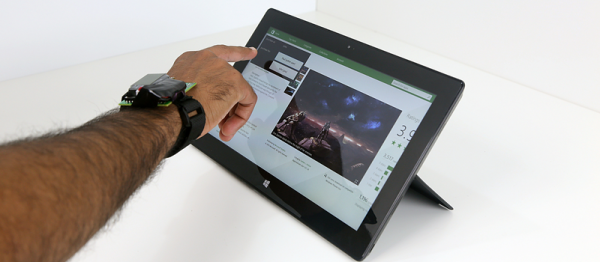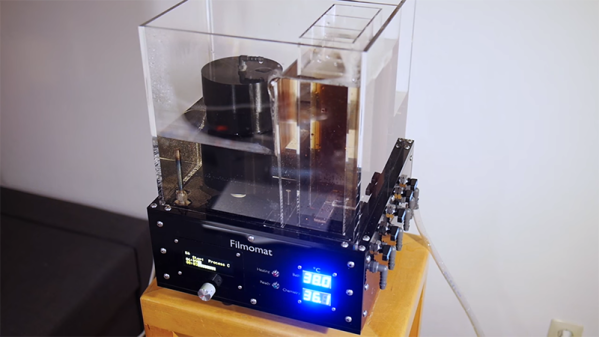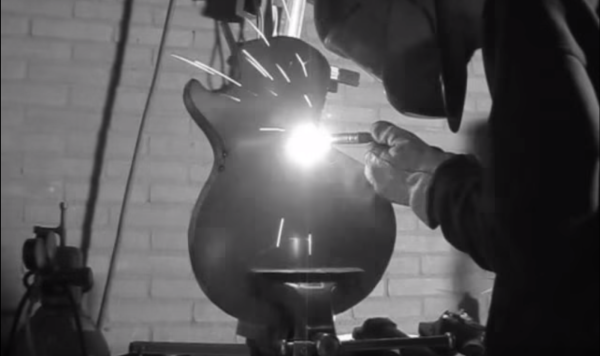Researchers [Christian Holz] and [Marius Knaust] have come up with a cool new way to authenticate you to virtually any touchscreen device. This clever idea couples a biometric sensor and low-data-rate transmitter in a wearable wrist strap that talks to the touch screen by electrifying you.
Specifically the strap has electrodes that couple a 50V, 150kHz signal through your finger, to the touchscreen. The touchscreen picks up both your finger’s location through normal capacitive-sensing methods and the background signal that’s transmitted by the “watch”. This background signal is modulated on and off, transmitting your biometric data.
The biometric data itself is the impedance through your wrist from one electrode to another. With multiple electrodes encircling your wrist, they end up with something like a CAT scan of your wrist’s resistance. Apparently this is unique enough to be used as a biometric identifier. (We’re surprised.)
Continue reading “Biometric Bracelet Electrifies You To Unlock Your Tablet”















